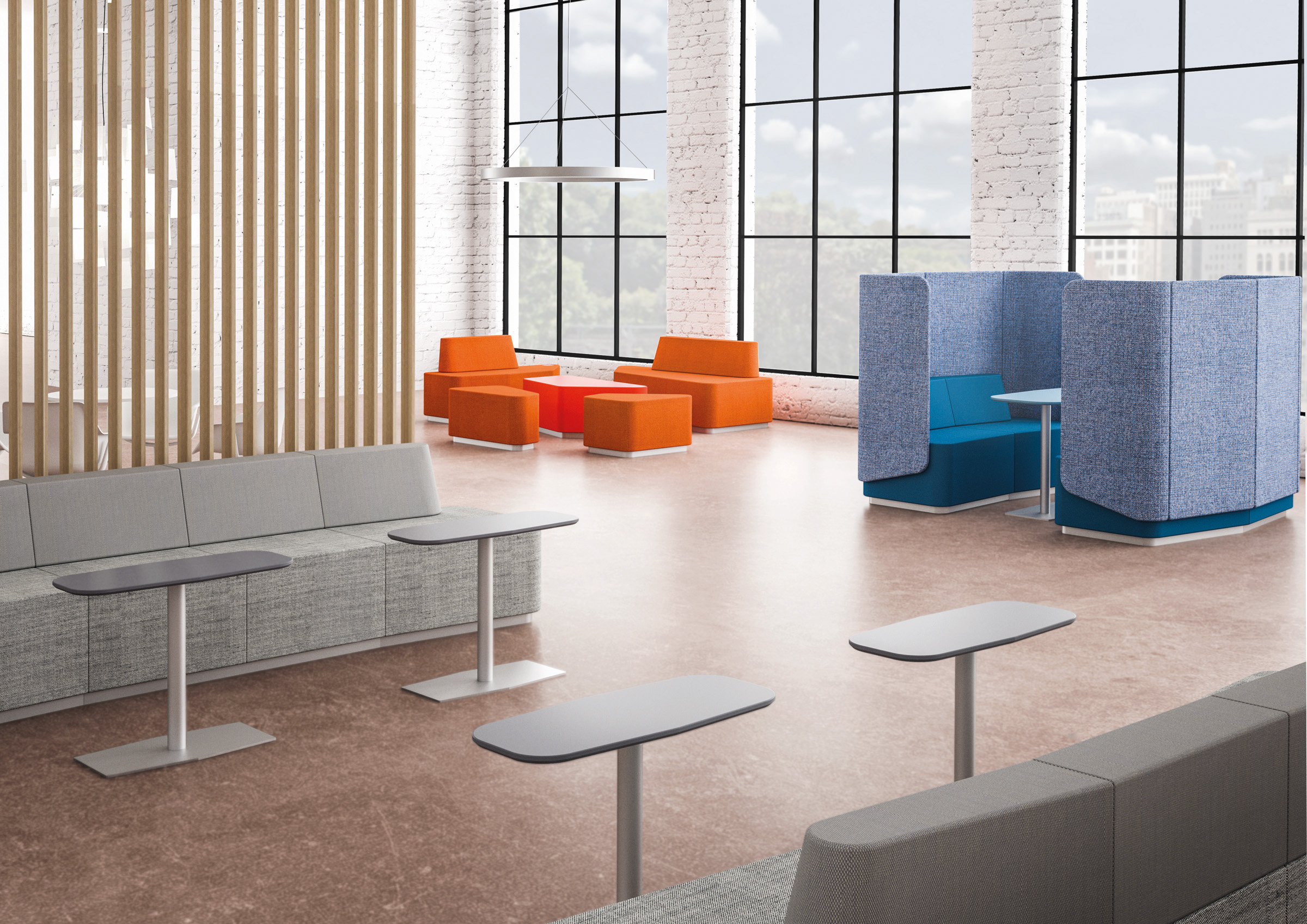Research shows that personal and professional achievement is dramatically affected by the space in which we work. How can you ensure that your work or school space is optimized for learning, productivity, and success?
First, take a moment to assess the function of the space. What is going to happen there? Presentations? Collaboration? Quiet work? Often, a single space is used for multiple purposes, and frequently for varied use at the same time. List the types of use and determine if each needs its own area or ‘zone’.
If you are creating a multi-function area, consider how to place each zone so that the types of work or learning in each don’t interfere with one another while still maintaining a sense of openness and flow in the space. Using furniture is a great way to create movable space definition. Individual pieces of furniture can provide privacy while still allowing some movement between zones. High-back lounge seating, pod seating, bookshelves, all can provide some privacy and quiet areas in an open space. The placement of furniture can also create differentiated work zones. Our brains register the differences in furniture grouping as separate areas. Standing height tables or bistro tables grouped together will appear to be a different area than a group of standard height tables or a group of 3 or 4 upholstered chairs – even if the groupings are right next to one another.
If noise is a concern, consider some of the many noise reduction options on the market today. Increasing textiles and upholstered furniture can reduce noise, sound reduction panels now come in some beautiful design-friendly shapes and formats, and sound masking technology can dramatically decrease noise distractions without impacting physical space.
Many schools and workspaces are embracing open plans, flexible use, and differentiated zones. Taking the time to think about the best way to use the space and incorporating that knowledge into your designs and furniture purchases will ensure that your space is maximized for productivity, learning, and success for years to come.
If you would like to learn more about ‘zones’ or would like help designing your space, we’re happy to help. www.brezach.com
An example of a ‘zoned’ non-traditional learning space:


